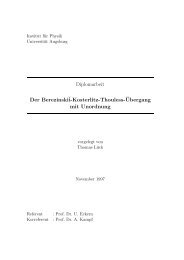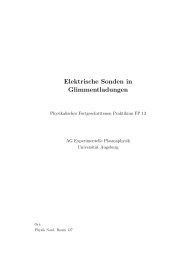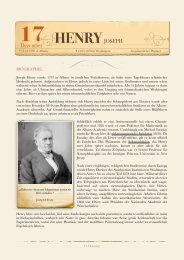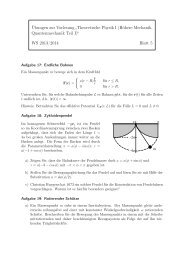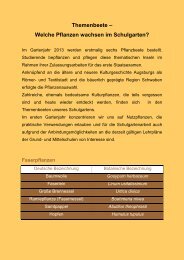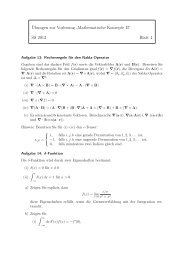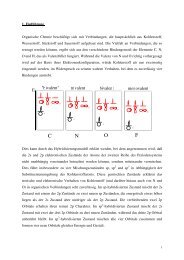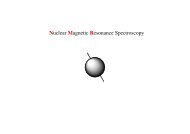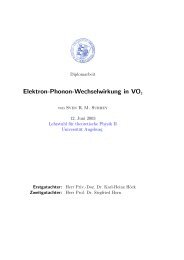Driven Quantum Systems - Institut für Physik
Driven Quantum Systems - Institut für Physik
Driven Quantum Systems - Institut für Physik
You also want an ePaper? Increase the reach of your titles
YUMPU automatically turns print PDFs into web optimized ePapers that Google loves.
264 <strong>Driven</strong> <strong>Quantum</strong> <strong>Systems</strong><br />
where |c 1 (t)| 2 + |c 2 (t)| 2 =1. With2¯hλ ≡−µE 0 and ϕ = π/2, yielding a pure cos(ωt)<br />
perturbation, the Schrödinger equation has the form<br />
⎛<br />
i¯h d c ⎞<br />
1(t)exp(i∆t/2¯h)<br />
⎝<br />
⎠<br />
dt c 2 (t)exp(−i∆t/2¯h)<br />
⎛<br />
= ⎝<br />
−∆/2<br />
−2¯hλ cos ωt<br />
−2¯hλ cos ωt ∆/2<br />
⎞ ⎛<br />
⎠ ⎝<br />
c 1(t)exp(i∆t/2¯h)<br />
c 2 (t)exp(−i∆t/2¯h)<br />
⎞<br />
⎠ . (5.83)<br />
With ¯hω 0 ≡ ∆, (5.83) provides two coupled first-order equations for the amplitudes,<br />
dc 1<br />
dt =iλ( exp[i(ω − ω 0 )t]+exp[−i(ω + ω 0 )t] ) c 2 ,<br />
dc 2<br />
dt =iλ( exp[−i(ω − ω 0 )t]+expi(ω+ω 0 )t] ) c 1 . (5.84)<br />
With an additional differentiation with respect to time, and substituting ċ 2 from the<br />
second equation, we readily find that c 1 (t) obeys a linear second order ordinary differential<br />
equation with time periodic (T =2π/ω) coefficients (Hill equation). Clearly,<br />
such equations are generally not solvable in analytical closed form. Hence, although<br />
the problem is simple, the job of finding an analytical solution presents a hard task! To<br />
make progress, one usually invokes, at this stage, the so-called rotating-wave approximation<br />
(RWA), assuming that ω is close to ω 0 (near resonance), and λ not very large.<br />
Then the anti-rotating-wave term exp(i(ω + ω 0 )t) is rapidly varying, as compared to<br />
the slowly varying rotating-wave term exp(−i(ω − ω 0 )t). Therefore it cannot transfer<br />
much population from state |1〉 to state |2〉. Neglecting this anti-rotating contribution,<br />
one has in terms of the detuning parameter δ ≡ ω − ω 0 ,<br />
dc 1<br />
dt =iλexp(iδt)c 2,<br />
dc 2<br />
dt =iλexp(−iδt)c 1. (5.85)<br />
From (5.83) one finds for c 1 (t) a linear second-order differential equation with constant<br />
coefficients — which can be solved readily for arbitrary initial conditions. For example,<br />
setting c 1 (0) = 1, c 2 (0) = 0, one obtains<br />
[ ( ) 1<br />
c 1 (t) =exp(iδt) cos<br />
2 Ωt − i δ ( ) ] 1<br />
Ω sin 2 Ωt ,<br />
c 2 (t) =exp(−iδt) 2iλ<br />
Ω sin ( 1<br />
2 Ωt )<br />
, (5.86)<br />
where Ω denotes the celebrated Rabi frequency<br />
Ω= ( δ 2 +4λ 2) 1/2<br />
. (5.87)



